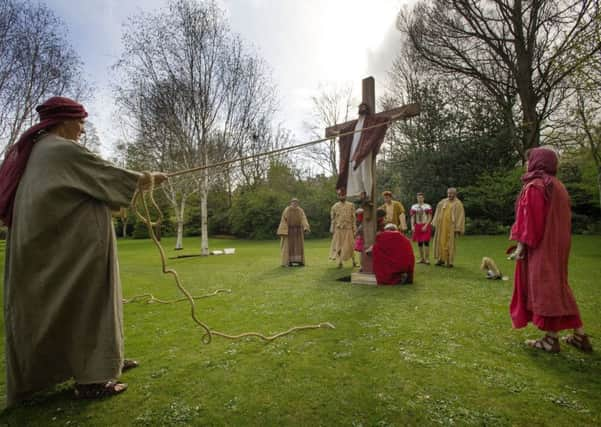Stop playing down pain of Christ's death, teachers urged


Tommy MacKay, visiting professor of education at Strathclyde University, has said that religious education is a compulsory part of the school curriculum to the age of 16, and teachers should not shy away from introducing complex subjects, including the Easter story of Christ’s death on the cross, which he says is not being taught to Scottish pupils.
“Schools are avoiding specific teaching on the crucifixion in schools,” he said.
Advertisement
Hide AdAdvertisement
Hide Ad“With our comprehensive commitment to the pleasure principle we are now excising from our culture everything that might offend our sensitivities. We are seeking to sanitise everything that might upset us.”
His comments follow moves in higher education towards giving students “trigger warnings” of lecture content that might upset them.
Theology students at Glasgow University, for example, are told in advance when they might see “distressing images” of Christ’s crucifixion.
MacKay said that the warnings to students fell into the same category as “the norm in schools of providing children with unconditional positive feedback and excessive praise”. He added: “With the result they become ill-equipped to deal with reality.”
MacKay said that when he was at school he was taught sections from the Bible, including Isaiah 53:5, which described Christ’s pre-crucifixion torture explicitly, using words such as “bruised” and “stripes” on his skin caused by whipping. “Why was that generation robust enough to take it all in its stride but not this generation?” he asked.
MacKay, who is also Director of Psychology Consultancy Services and an adviser to the Scottish Government and a number of local authorities, added: “It is part of something very much bigger that is in my view now eating away at the moral fibre of the country.”
His views were supported by Professor Gordon Graham, Fellow of the Royal Society of Edinburgh, who said: ”Most people have stopped thinking about the meaning of the crucifixion – that evil is defeated by suffering – and Easter has now reverted to the pagan spring festival that it was meant to transform. We roll eggs but that has nothing to do with the stone in front of Christ’s tomb.”
Professor Graham added: “The majority now believe that evil is to be defeated by economic growth, technological innovation and military strength – despite all the contrary evidence of the 20th century, the most advanced and most destructive century in human history.”
Advertisement
Hide AdAdvertisement
Hide AdThe Rev Robert Walker, a former teacher of religious education in Scottish schools, said: “The reality is that in many schools religious education will barely cover Christianity let alone the death of Christ and if it is mentioned it will not have any emphasis on the nature of the physical suffering.”
Earlier this year Glasgow University issued warnings to its theology students taking a course called Creation to Apocalypse: Introduction to the Bible, including an assurance that a warning would be given before graphic scenes, such as the crucifixion, were shown.
At the time, a spokesman for the university said it had a “duty of care” to students when it came to material that “may cause potential upset or concern”.
Robert Canning, chair of Secular Scotland, said his organisation had no objection to pupils being exposed to Christ’s resurrection as it was a “key narrative” of Christianity.
“We support the role of schools in acquainting the young with the principal beliefs of the major religions,” he said.
“Nor would we claim that images or descriptions of crucifixion are likely to prove unacceptably distressing to most children, who must at some point be allowed to know that such atrocities and agonies are still a sad reality of our world.
“Since, however, there is no reliable evidence for the resurrection, or to support the belief that the crucifixion atoned for human sin, we do not agree that state-funded schools should present such narratives as objective historic truth, as opposed to what Christians believe.”
A spokesman for Education Scotland said: “Headteachers and teachers are responsible for the delivery of specific aspects of the curriculum, using professional judgment and Curriculum for Excellence guidance to ensure that their lessons are appropriate for the age and stage of their pupils.
Advertisement
Hide AdAdvertisement
Hide Ad“In Religious and Moral Education, schools are encouraged to support children and young people to develop an awareness of the range of religious and moral beliefs around a topic and their own responses to them.”